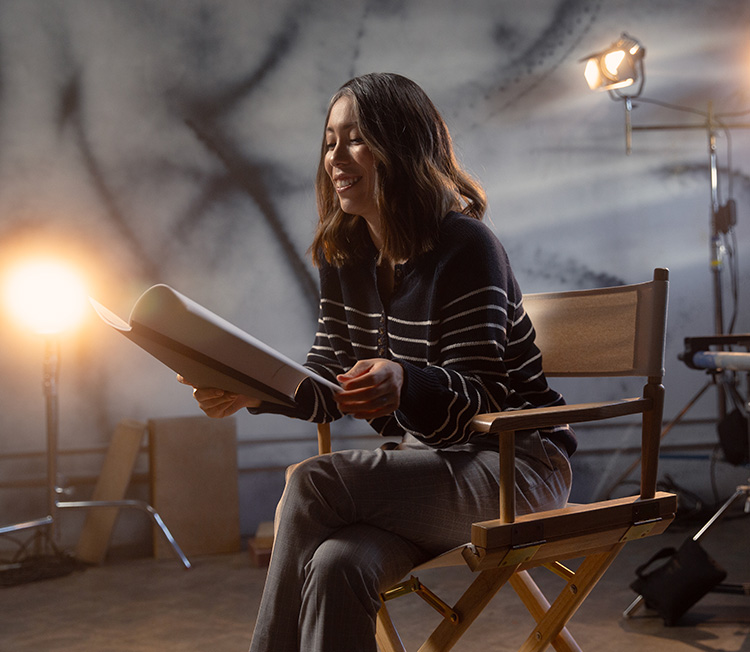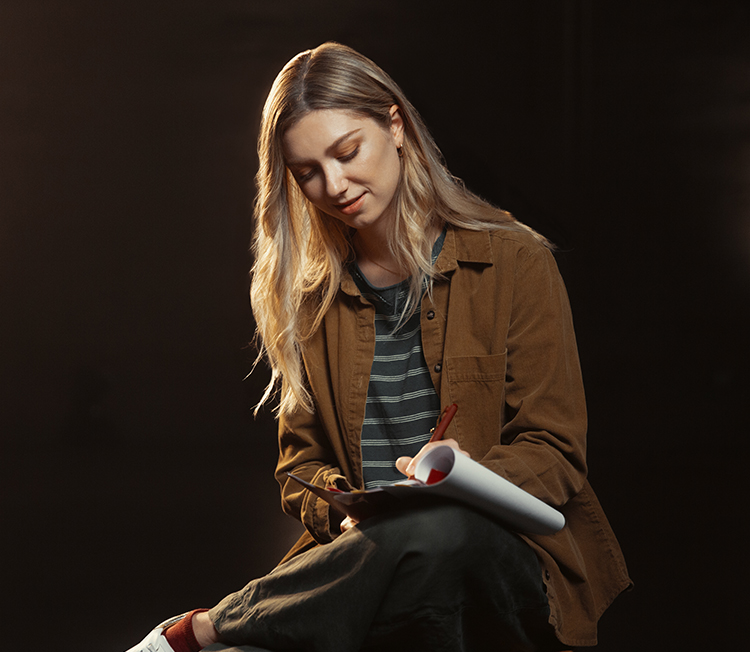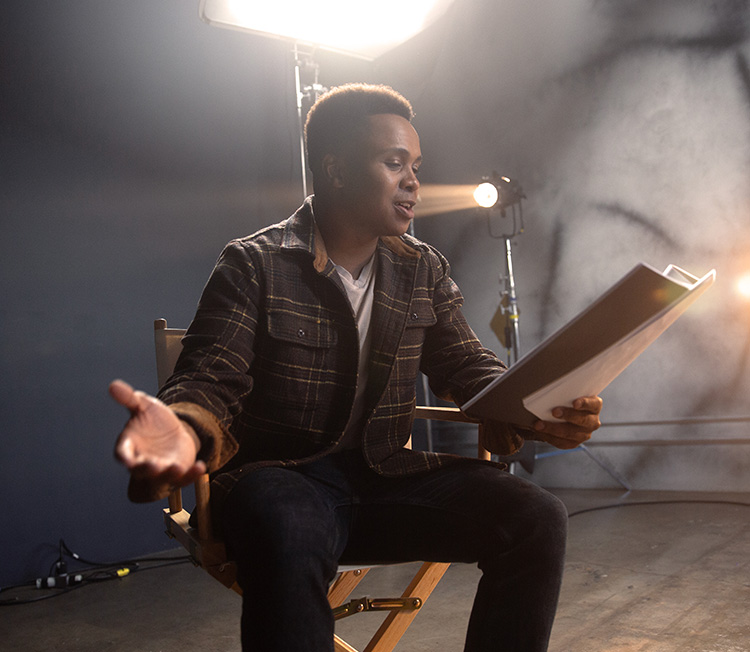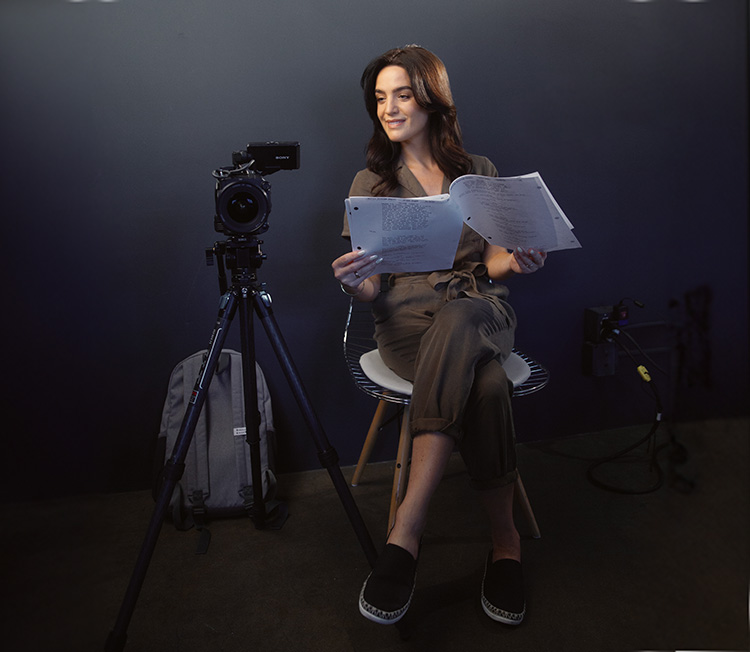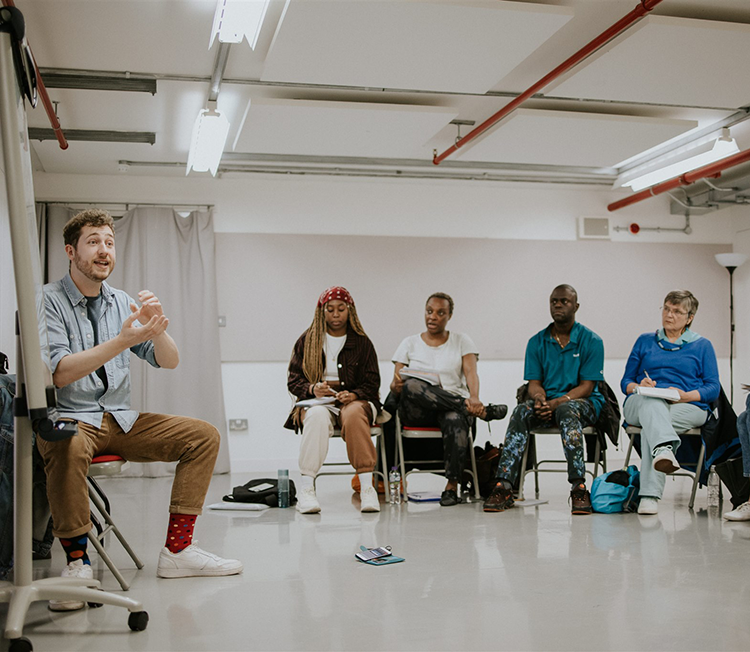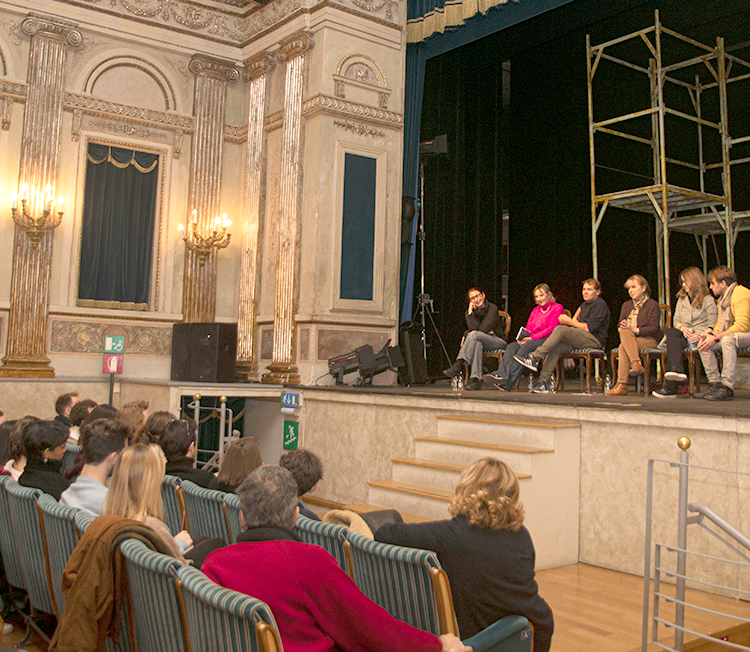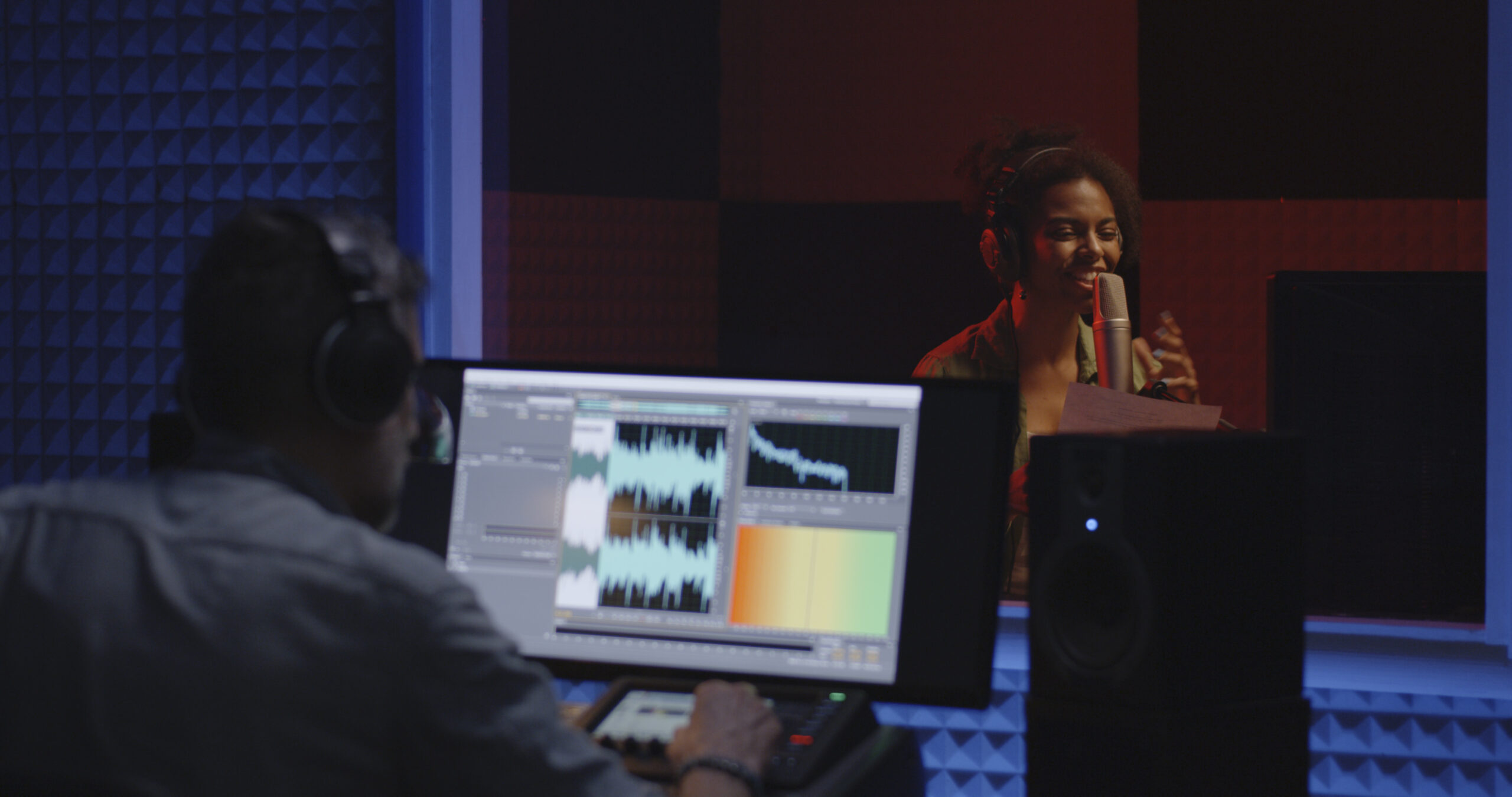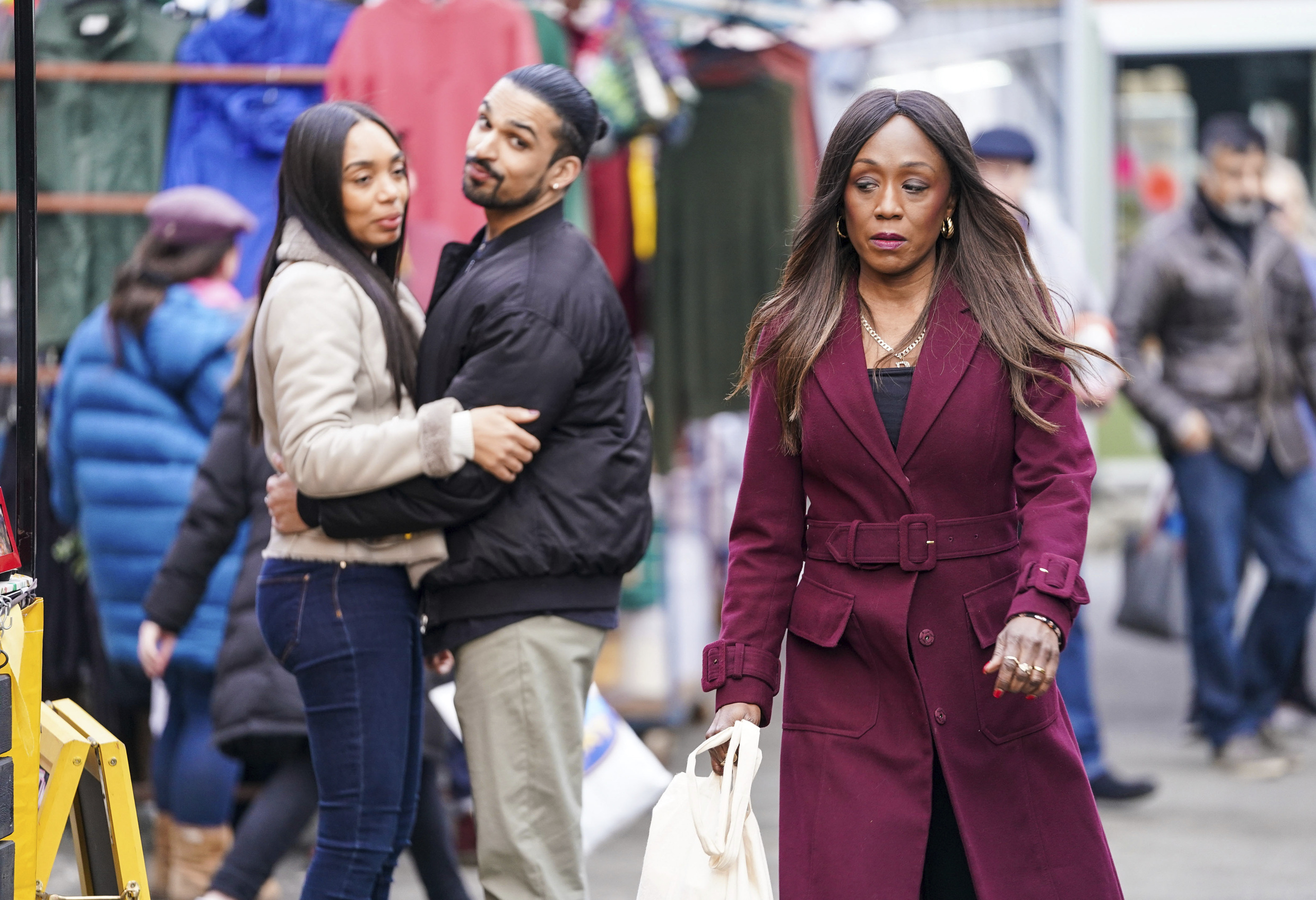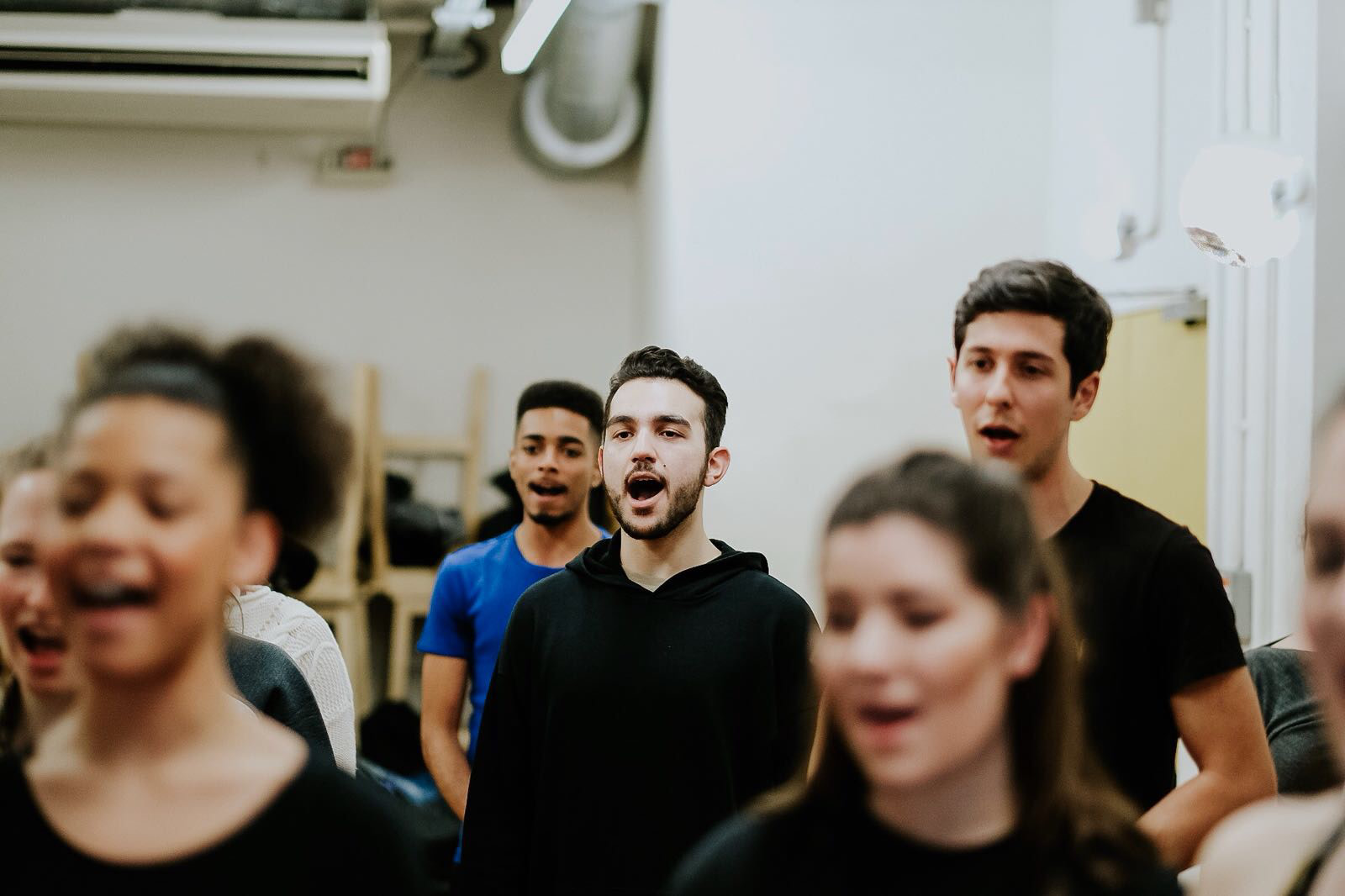Tips and advice for creating a voice reel, including how to make one, why it’s needed and what you should include in yours.
Voice over is becoming more and more of an accessible and exciting platform, with a huge wealth of work available that gives performers another way to build a successful, fulfilling and varied career. One day, you could have a last-minute commercial session from your home studio, and the next, you’ll be doing an in-person recording for a video game or even an audiobook.
The variety and range a performer can explore in this area of the industry is so exciting and freeing. Still, in order to start exploring the world of voice over, casting directors need to listen to an example of your voice. This is best done through a voice reel or multiple voice reels. Voice reels can be a crucial factor in getting seen and booked for an expanse of voice work.
What is a Voice Reel?
A voice reel is your opportunity to showcase your voice skills to casting directors and acts as a main part of your ‘brand package’ for your voice. It should be a series of well-produced clips of your voice in various styles, energies, pacing and tones within one strand of the voice over industry. For example, a commercial reel may have roughly four to seven clips.
You will likely have a set of voice reels on your Spotlight profile – each one showcasing your skills for the different strands of the voice over industry, which could include commercials, documentaries, corporate, audiobooks, video games, animation, promos, and audio dramas. Agents and clients will then be able to hear your work and consider or directly book you for a vast range of projects.
If you have multiple voice reels, it’s important to name them with easily identifiable labels. Having one voice reel titled ‘Megamix’, for example, means agents and casting teams won’t know where to look for specific strands or be able to find the exact example of work they need to hear if you’ll be suitable for a job. It’s essential to make it really easy for casting directors to locate the right clips.
Creating Your First Voice Reel
You won’t need a massive set of reels to start working in the voice over industry. You can always add to your set as you progress through your career and gain more experience, skill and confidence. The leading voice reel you need when starting out is a commercial reel. It’s also advised to get a narration clip, as this shows how you handle longer-form text and even storytelling.
Start with a three- to five-clip commercial reel with a well-produced, snappy set of scripts that reflect your range and your personality, mixed with suitable, royalty-free music and some sound effects to keep it engaging, textured, and to suit each advert’s tone. You could also get a clip of you narrating an audiobook segment for roughly one minute, including some character voices to show your accent skills, mic technique and character range. Finally, record a corporate clip to show you can handle long-form, complex text with clarity, confidence and skill. This will give you a set of three voice reels to start you off.
In a few years, if you’ve started to book work, gained experience or can do a new accent, you could then get a video game or animation reel done in which you display four to seven characters with different accents, ages, paces, etc. By waiting to get this done, you’ve honed your skills first and are now ready to expand your portfolio to reflect your current skill set.
If you’d like to try recording your voice yourself, take a look at our guide to setting up your own voice over studio at home and recording your voice at home for more information.
Here are a few more points to consider when creating your voice reel:
Who Does Your Voice Appeal to?
I did my first set of voice reels with little to no commercial experience and was guided by a fantastic voice reel expert and ex-voice agent. They helped me understand where my voice best sat within branding and demographics.
What Consumer Bracket Does Your Voice Most Appeal to?
My voice has quite a relatable, young, bright and friendly tone, so I have consistently voiced brand campaigns that stereotypically appeal to that bracket of consumers. Have a listen out for voices that sound a bit like yours and see what ad campaigns they are voicing for. This is a good way to understand the consumer bracket your voice may relate to or impact the most. It’s time to start listening to those YouTube ads instead of skipping them – they can be really helpful research!
To help identify your vocal qualities, have some people listen to your voice and give feedback on the qualities they notice. Perhaps they feel your voice is smooth, rooted, husky, dynamic, bright, warm or characterful. This is a good way to start getting an image of your vocal quality.
You could also browse through voice agents’ websites, listen to their clients’ voices and look at what words each voice is described with. This also gives you a good indication of what voices are out there and how they’re described within the industry.
Discovering what demographic or style your vocal tone appeals to can help you find scripts that work best for your voice.
Include a Variety of Voice Clips
When I graduated from drama school, I found going to a voice reel company very useful to get my voice reels done. From this, I started out with a professionally produced five-clip commercial reel.
Some clips were slower and more sincere, two were really chatty and conversational, one was sales-orientated with more energy and enthusiasm and another showcased my other native accent, having grown up around a predominantly Scottish family. I also got a narrative clip to showcase some long-form text in the documentary style, so my complete set of reels really demonstrated my versatility.
I went on to get signed and booked for consistent work purely off this voice reel set, so you don’t need to go full-on ‘book it all’ mode when getting your first reels done.
Showcase the Real You
One misconception I had when recording my voice reel was that I needed to ‘speak properly’ – whatever that means! – so, I started putting on a more RP accent. Swiftly, the director asked me if I usually pronounce my ‘t’ sound when I speak (which I don’t usually do in my native Estuary accent). I didn’t realise that the relaxed, informal part of how I naturally speak was something I should be proud of and showcasing on my voice reels.
Your vocal reel is about your voice and showcasing your natural accents and speech quality as your unique selling point – not trying to sound like something you’re not. As long as your performance is clear, dynamic and full of personality and you-ness, your reels will do a cracking job at showing who you are as a voice artist and person.
Do Some Voice Over Training
It’s important and beneficial to get some training before you do your voice reels. When I got mine done, I was lucky to have had quite extensive audio drama training in and outside of drama school, so I was accustomed to mic technique and using my voice in various ways. If you’re in a position where this is completely new work for you, get some voice over training before you do your reels.
This could be by submerging yourself in voice over content, getting a voice over coach, taking a short course with an acting school (many offer part-time courses now), or finding an online course. There are many out there!
Refine your technique by practising and understanding how to use your voice effectively for different styles of scripts. This will give you a fantastic basis to record your reels. You’ll then leave with a set of reels that reflect you at your best. You wouldn’t record your film and TV showreel with no training beforehand, would you?
Making a Character Reel
It’s a misconception that voice artists are not actors. Animation and video game voice artists tend to have some form of acting training to bring these character voices to life, so it’s not enough to just do a silly voice.
To start developing character voices, first play around with what you have. Those voices you put on when you talk to your pet, the wacky voices you use with your niece and nephews, voices you tend to mimic from animations or video games – these are all great places to start! Start playing with your vocal range and try to find voices in different body parts.
Character reels can also be the perfect opportunity to showcase your accent skills. In commercial work, you tend to only be booked for your native accent(s), as they need to be authentic. However, in animation and video game voicing, yes, these accents need to be at a very good level, but you can show the span of your accent skills from character to character on your reels.
For example, my animation reel showcases a young girl’s voice, an American chirpy space ranger, a cockney grumpy character, etc. A reel in this style can showcase a multitude of skills and be really fun to listen to as well.
How Do You Record Your Own Voice Reel?
You can record a voice reel yourself, but remember that it takes skill to make it sound professional enough to be taken seriously, especially if it’s a commercial reel. There are lots of voice reel companies out there that specialise in helping you create fantastic reels, but if you decide to create one yourself, here are some tips:
Use Your Connections
Do you know someone with a home studio? Or someone who can master raw audio files, mix music, or access royalty-free music? If so, reach out to them for help with your voice reel.
Listen to Existing Voice Reels
Listen to voice reels of working voice actors on voice agents’ websites. These give a great indication of what works on a voice reel for individual voices.
Use Your Creativity
With animation and video game reels, get creative! This is absolutely a voice reel type that you can play around with in your home studio set-up and improvise around characters to find some fun snippets of the script to use.
It’s best to avoid lifting things directly from shows or games, so get creative and write some snappy, engaging lines for each character’s voice you have. Or, team up with a friend, ideally another performer, to help you with the process. YouTube is also your best friend when it comes to expanding your character voice range or learning how to use free software, like Audacity, to edit your raw audio and even add some sound effects.
Voice Reel Top Tips
- The more ‘you’ you can make your voice reel, the better. Make it even more ‘you’ by having your reels reflect your personality, likes, hobbies and knowledge base. Or try recording a snippet from a documentary on a topic you know a lot about or are excited by and invested in.
- For your commercial reel, choose the clip that is most you, that you could do effortlessly, day in, day out, as your first clip. This may be the most conversational and relaxed clip or the chatty and bright clip – whichever you feel best reflects you as a person and a voice artist.
- Try to order the reel with opposing energies and tones coming after each other. This makes for a dynamic, varied and engaging commercial reel, which helps show agents and casting directors that you have an expansive range and know how to change up your performance dynamics.
Getting your voice reels sorted can be daunting, but you have to start somewhere. You will add to, refine and reinvent your reels as you go through your voice career. Investing in a good starting package is a great way to launch yourself into this side of the industry. There’s also so much professional help out there.
If you ever feel lost, remember that there’s a voice over community waiting to welcome you and help you. I’ll see (or rather hear) you out there!
 Abbie Andrews is a BBC Carleton Hobbs Winner. Other radio drama credits include titles with Big Finish and Audible. Abbie has gone on to voice campaigns for Bumble, Maltesers, Vinted, Argos, Dyson and Screwfix, as well as narrating audiobooks for the BBC and Harper Collins, as well as corporate campaigns for Tesco Mobile and NHS. She can be heard in Video Game titles such as Watchdogs: Legion. Abbie’s passion for voice work led her to launch V.O. Gym in 2021. V.O. Gym specialises in professional voice reels and voice over coaching for actors and voice artists.
Abbie Andrews is a BBC Carleton Hobbs Winner. Other radio drama credits include titles with Big Finish and Audible. Abbie has gone on to voice campaigns for Bumble, Maltesers, Vinted, Argos, Dyson and Screwfix, as well as narrating audiobooks for the BBC and Harper Collins, as well as corporate campaigns for Tesco Mobile and NHS. She can be heard in Video Game titles such as Watchdogs: Legion. Abbie’s passion for voice work led her to launch V.O. Gym in 2021. V.O. Gym specialises in professional voice reels and voice over coaching for actors and voice artists.
Headshot credit: YellowBellyPhoto

